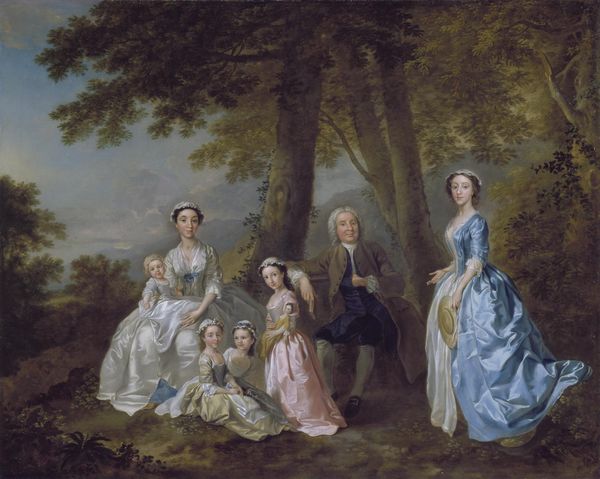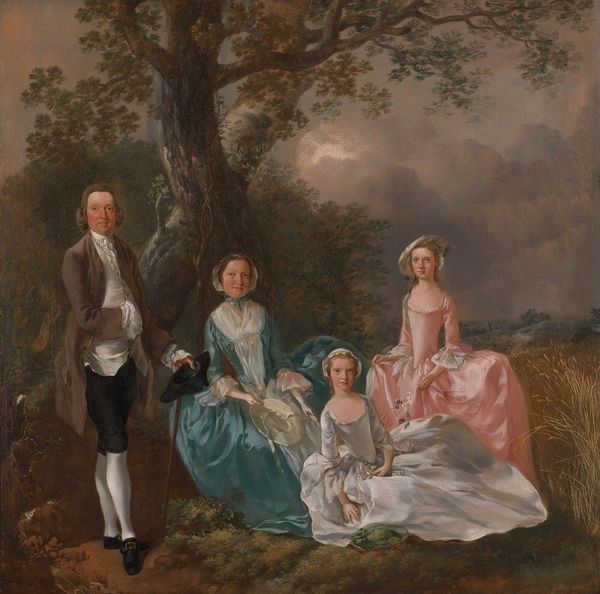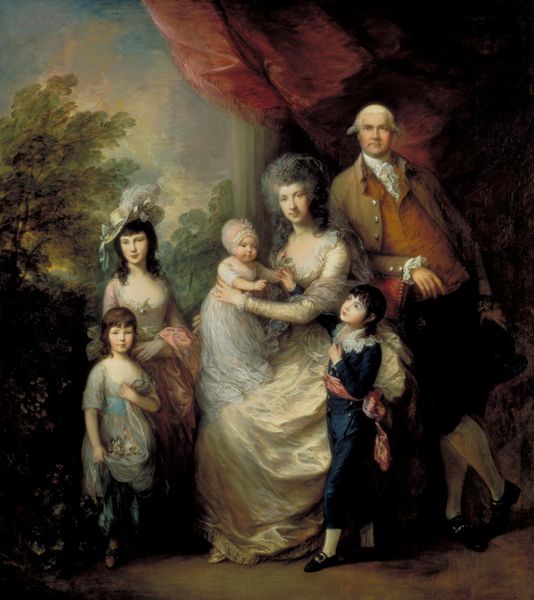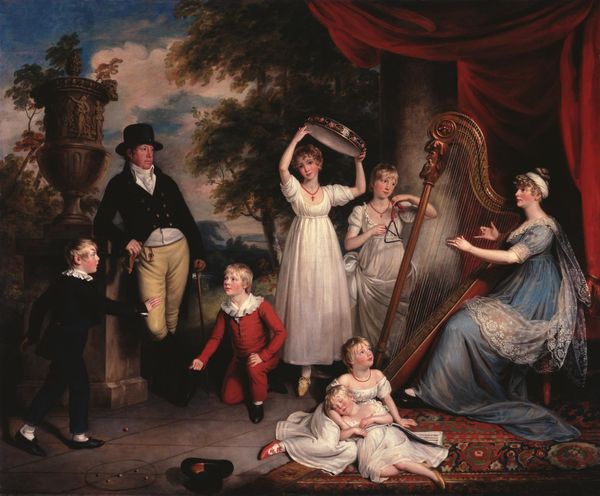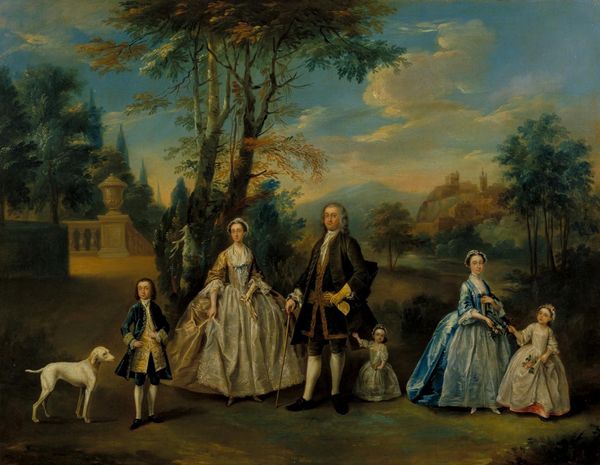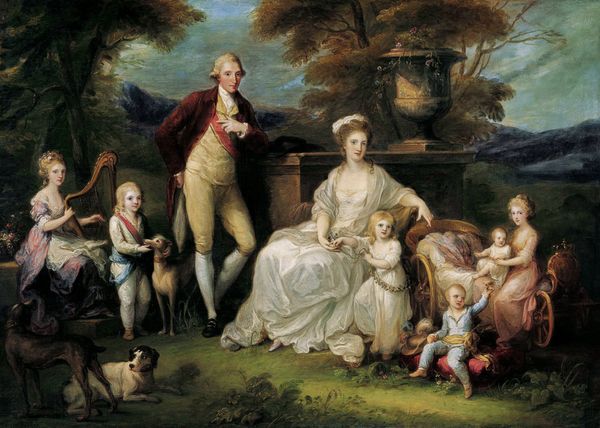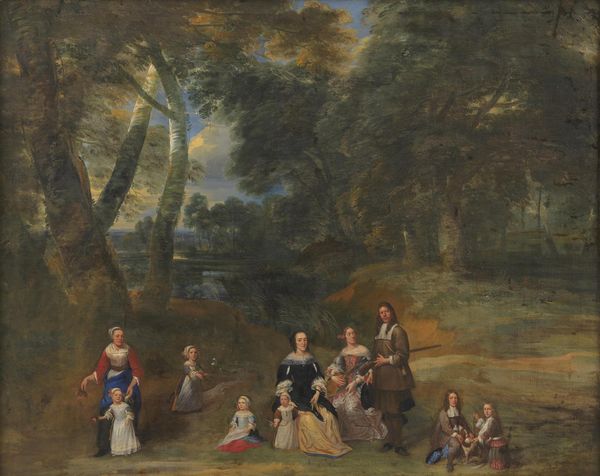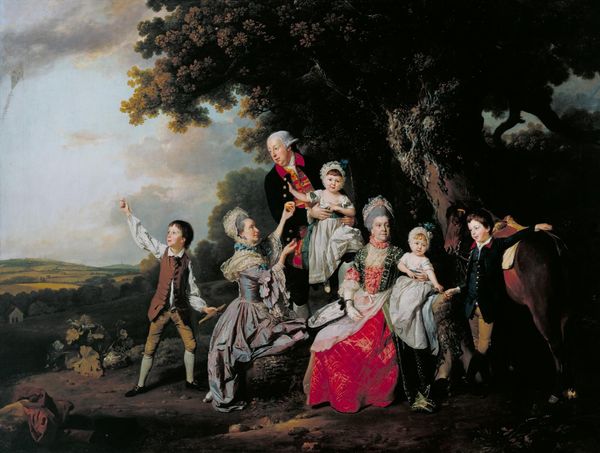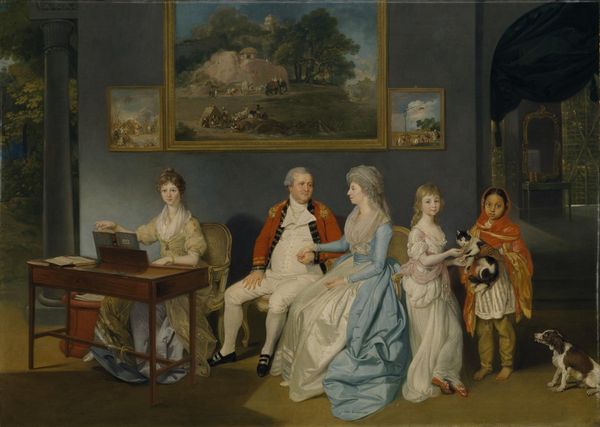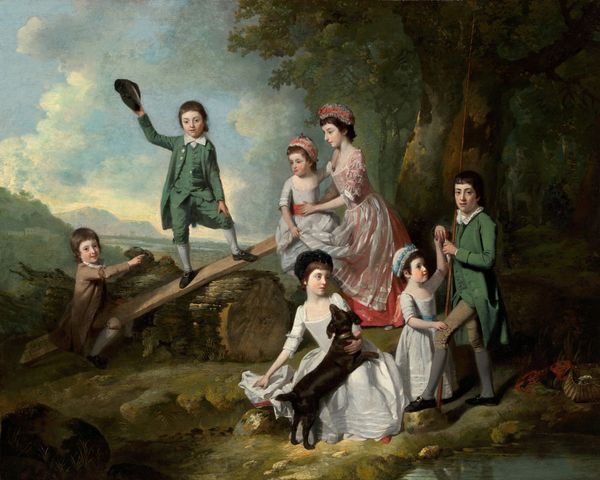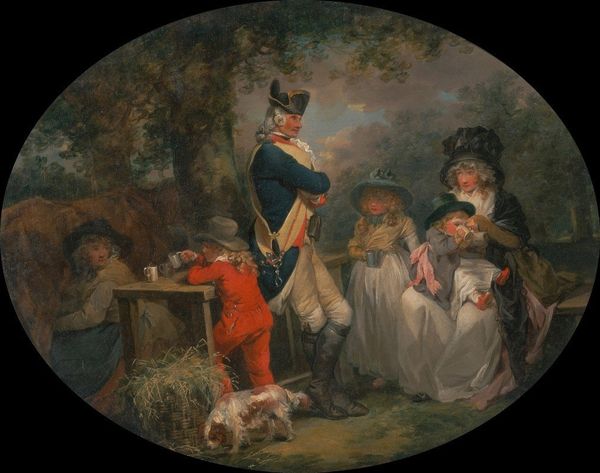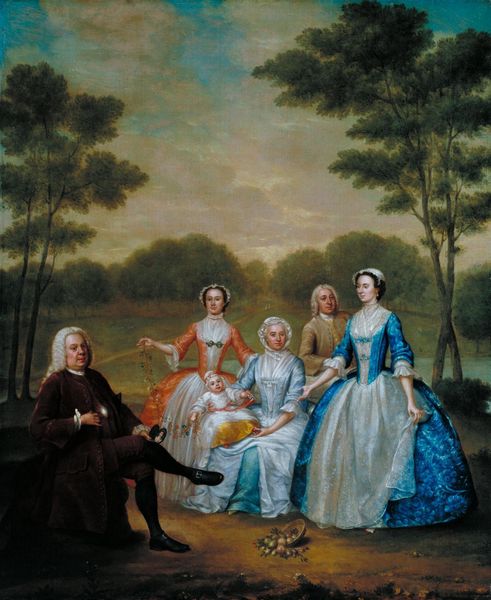
Dimensions: support: 1016 x 1270 mm
Copyright: CC-BY-NC-ND 4.0 DEED, Photo: Tate
Editor: Here we have "A Family Group in a Landscape" by Francis Wheatley. It's quite a large painting, full of figures engaged in leisurely activities. The presence of a Black servant really stands out. What can you tell us about the social context of this painting? Curator: It reflects the values of the British landed gentry in the late 18th century, doesn't it? The family's wealth is subtly displayed through their clothing and the presence of a servant. The landscape itself is a constructed ideal, a stage for portraying social status and familial harmony. How does the painting's composition reinforce these ideas? Editor: Well, everyone is neatly arranged and there is a clear visual hierarchy. The parents are at the center, literally and figuratively. I see now how constructed this image is, and how much it reveals about British society at the time. Curator: Exactly. It's a window into the complex power dynamics of the era. Editor: Thank you, that gives me a whole new perspective!
Comments
tatebritain 6 months ago
⋮
http://www.tate.org.uk/art/artworks/wheatley-a-family-group-in-a-landscape-n03678
Join the conversation
Join millions of artists and users on Artera today and experience the ultimate creative platform.
tatebritain 6 months ago
⋮
Very little is known about the family represented here. The picture gives the impression that they are unposed, spending time together outdoors. Their careful arrangement, however, conveys a sense of hierarchy. At the edge, is a young Black boy. While visually linked by the kite winder he holds and his red clothes, he is physically detached and shown in shadow. These elements may reflect the marginalised position of free and enslaved African domestic servants in Britain during the 18th century. Here, his inclusion is likely intended to signify the wealth and status of the family. Gallery label, April 2023
